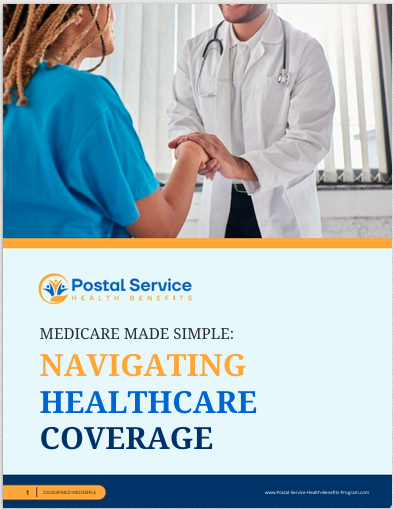Key Takeaways
-
Understanding PSHB copayments is essential for managing healthcare expenses, as they directly impact your out-of-pocket costs.
-
Knowing the differences between copayments, deductibles, and coinsurance can help you make informed decisions about your health coverage under PSHB.
Understanding Copayments in the PSHB Program
If you’re enrolled in the Postal Service Health Benefits (PSHB) Program, you’ve probably come across the term “copayment.” But what exactly does it mean for you? Copayments, or copays, are fixed amounts you pay out-of-pocket for certain healthcare services, like doctor visits, prescriptions, and emergency room trips. These costs can add up quickly, so understanding how they work can help you plan and budget for medical expenses throughout the year.
Copays vs. Deductibles vs. Coinsurance: What’s the Difference?
Healthcare costs can sometimes feel like a confusing maze of expenses, but breaking them down makes things easier. Here’s a quick rundown of the key terms:
Copayment (Copay)
A fixed dollar amount you pay for specific medical services. For example, visiting your primary care doctor might come with a set copay, while seeing a specialist or visiting the emergency room might have a different amount.
Deductible
The amount you pay out-of-pocket before your insurance kicks in. If your plan has a $500 deductible, you’ll need to cover that amount before your insurance starts sharing costs.
Coinsurance
A percentage of the total cost you pay after meeting your deductible. If your coinsurance is 20%, you pay 20% of the bill while your plan covers the remaining 80%.
Understanding these three elements is key to managing your overall out-of-pocket healthcare costs under the PSHB Program.
How PSHB Copayments Affect Your Healthcare Costs
Copayments may seem like small fees at first, but they can have a big impact on your total medical expenses. The good news is that PSHB plans are designed to keep your copayments predictable, so you’re not caught off guard with unexpected costs. Here’s how copays come into play:
-
Routine Medical Visits: A visit to your primary care physician usually has a set copay, making regular checkups more affordable.
-
Specialist Appointments: If you need to see a specialist, expect a higher copay compared to a regular doctor visit.
-
Emergency Room and Urgent Care: Emergency room visits typically have the highest copays, while urgent care centers tend to be more affordable.
-
Prescription Medications: Different types of drugs (generic, brand-name, specialty) have varying copays.
Knowing these costs in advance helps you plan your healthcare budget and avoid financial surprises.
Copayments for Different Types of Services
Your PSHB plan covers a wide range of medical services, each with its own copayment structure. Here’s what you can expect:
Primary Care Visits
Seeing your primary doctor is one of the most common healthcare expenses. Most PSHB plans have affordable copayments for these visits, making it easier to stay on top of routine checkups and preventive care.
Specialist Visits
Specialists, like cardiologists or dermatologists, usually come with higher copayments. If you need to see a specialist regularly, these copayments can add up, so it’s important to factor them into your budget.
Urgent Care vs. Emergency Room
If you have a non-life-threatening issue that needs quick medical attention, urgent care centers often have lower copayments than emergency rooms. For true emergencies, hospital visits will typically have the highest copayments.
Prescription Drug Copayments
Medications are a significant healthcare cost for many people. PSHB plans categorize drugs into different tiers, with varying copayments for each:
-
Generic Drugs: Typically the most affordable option with the lowest copays.
-
Brand-Name Drugs: Higher copays than generics but usually more affordable than specialty drugs.
-
Specialty Medications: These have the highest copayments due to their complexity and cost.
Reviewing your plan’s drug formulary can help you understand which medications have lower copayments.
Managing Your Healthcare Costs Effectively
While copayments are unavoidable, there are ways to keep your out-of-pocket expenses under control:
-
Choose In-Network Providers: Visiting doctors and specialists within your PSHB plan’s network ensures lower copays.
-
Use Preventive Services: Many preventive services are covered with little to no out-of-pocket costs, reducing the need for expensive treatments later.
-
Compare Drug Options: Ask your doctor if a lower-cost generic or alternative medication is available.
-
Consider Urgent Care Over ER Visits: Unless it’s a true emergency, choosing urgent care can save you significant money on copays.
Annual Out-of-Pocket Maximums: A Safety Net
No one wants to worry about unmanageable medical bills. That’s why PSHB plans come with annual out-of-pocket maximums. Once you reach this limit, your plan covers 100% of covered medical costs for the rest of the year. This cap includes copayments, deductibles, and coinsurance, helping you avoid excessive healthcare expenses.
Staying Informed About Your PSHB Plan
To get the most out of your PSHB benefits, it’s important to stay informed about your plan’s specific details. Here are a few steps to keep yourself up to date:
-
Review your plan documents annually. These outline your copayments, deductibles, and covered services.
-
Check for updates during Open Season. Plan changes can impact your costs, so it’s essential to review your options each year.
-
Use online tools and customer support. Many PSHB plans offer online portals where you can track medical expenses and find in-network providers.
Making the Right Choice for Your Healthcare Needs
When selecting a PSHB plan, consider how copayments fit into your overall budget. If you visit doctors frequently or take multiple medications, a plan with lower copayments may be more cost-effective. On the other hand, if you rarely need medical care, a plan with higher copayments but lower premiums might be a better fit.
Understanding Copayments Helps You Take Control of Your Healthcare Costs
Copayments are an essential part of your PSHB health plan, impacting everything from routine doctor visits to prescription drug costs. By understanding how they work, you can make informed decisions about your medical care, reduce out-of-pocket expenses, and ensure you’re getting the most value from your benefits.
For more details about PSHB plans and how they impact your healthcare costs, get in touch with a licensed agent listed on this website. They can help you explore your options and choose the best plan for your needs.






